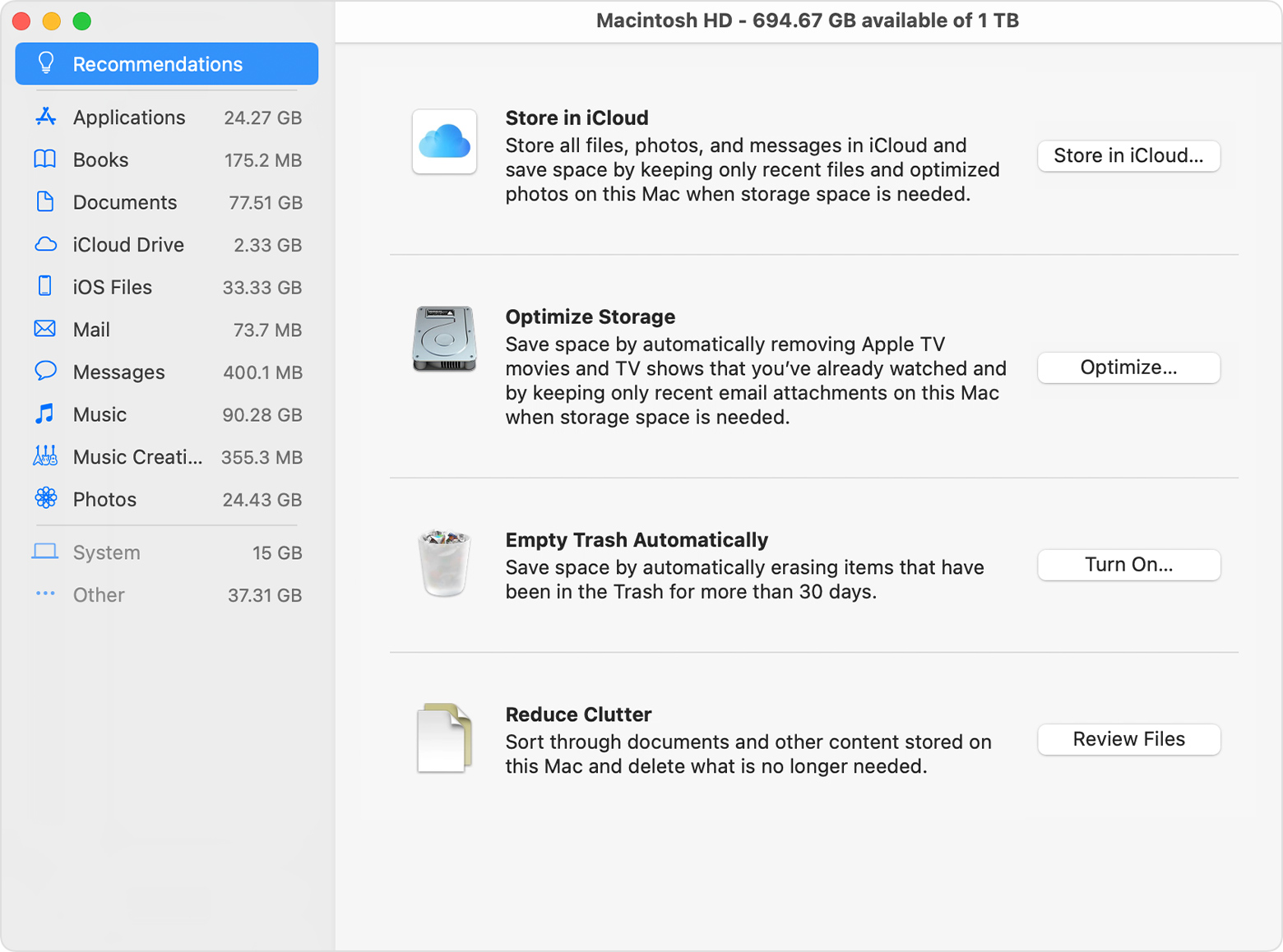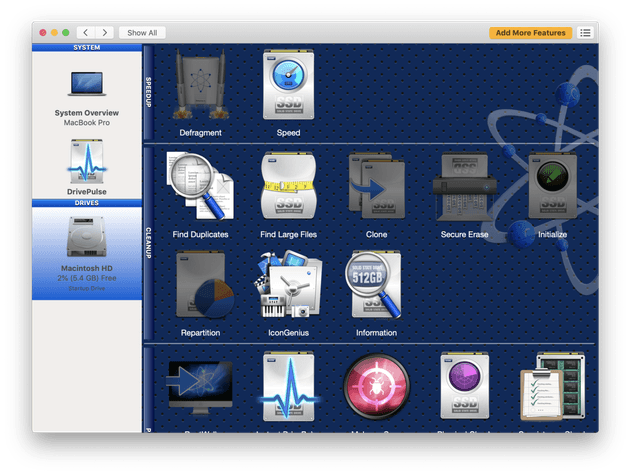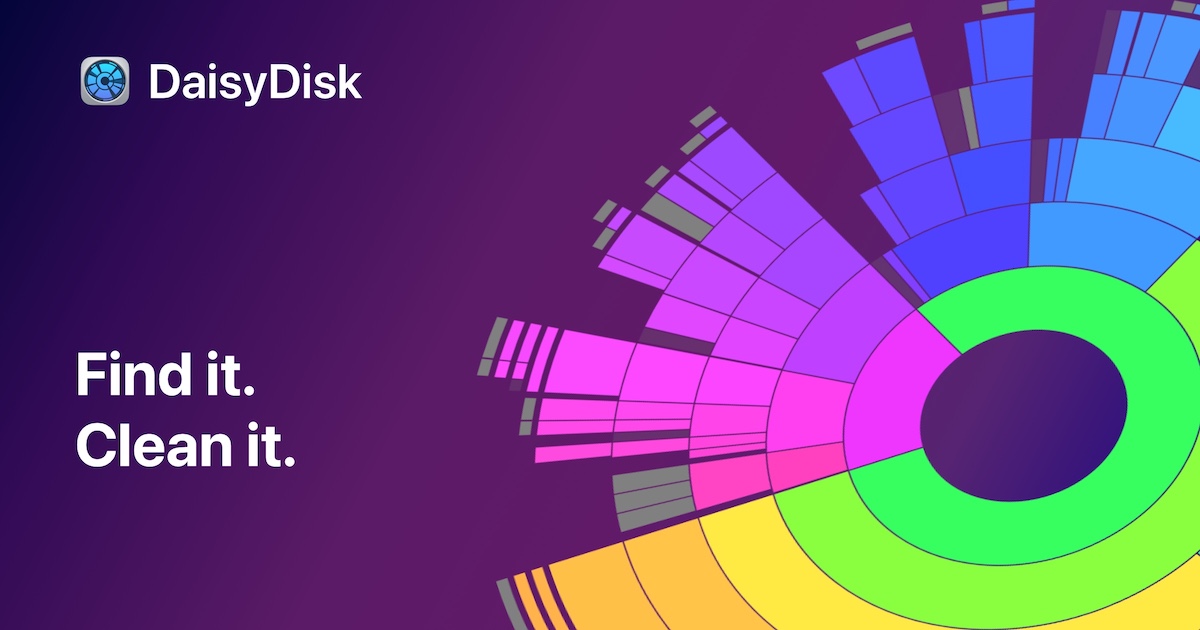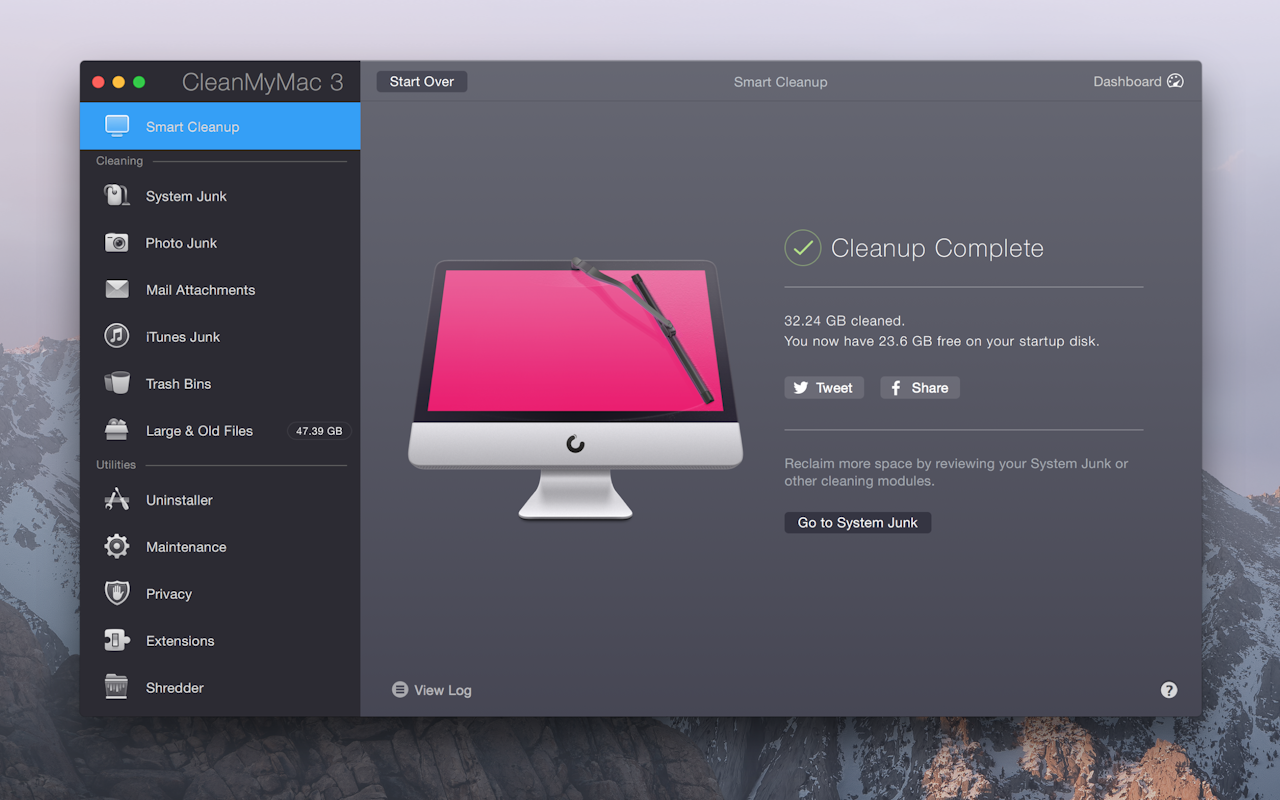Mac Disk Cleanup Free
Wise Disk Cleaner Free is completely free. Anyone can download it for free and enjoy free automatic update and technical support by email. Better yet, Wise Disk Cleaner is a small and absolutely virus-free program that consumes very little system resource. Mac disk cleanup utility is a good option to delete unwanted cached and hidden data. It not only removes the unwanted stuff from your PC but also speeds it up. You can find many disk cleaning apps online to free up the disk space. Mac cleaner for Mac OS X 10.7. Best Mac cleaner for Mac OS X 10.7 - clean up your Mac system junk files (caches, logs, trash) and remove unwanted appli. Free download iMac Cleaner. Free download iMac cleaner - EaseUS CleanGenius can remove hidden data and applications hogging the disk space so that m.
28 February 2021
Does your Mac feel a little slow and unresponsive?
Or is it displaying a 'Your disk is almost full' error message?
That could be because there are excessive junk files occupying your Mac's storage disk.

Junk files take many shapes and forms. They also have varying sizes (some are tiny files while some may run into gigabytes) and are scattered across several folders on your Mac. Manually locating and removing these unwanted disk-consuming files can be exhausting and futile.
Thanks to Mac cleaning and optimization software, you can give your Mac's storage a clean sweep and free up space within seconds. So, here are our top picks of the best Mac cleaner software in 2021.
Best disk cleaner for Mac
You'll find tons of applications out there offering disk cleanup for Mac. Choosing the best one that matches your needs can get difficult. This is why we compiled this list containing ten of the best cleaning software for Mac.
| Rating | Name | Features / Remarks | More Info |
|---|---|---|---|
| 1 | MacKeeper | Best all-in-one solution to clean your Mac. Found the most junk files. Removes viruses, malware, and blocks ads/trackers. Provides 24/7 monitoring on your Mac for data breaches. | Link |
| 2 | CleanMyMac X | Offers a “Smart Scan” feature that cleans and optimizes your Mac in one click. Comes with a “Shredder” that lets you remove locked items and junks without facing any (Finder) errors. | Link |
| 3 | CCleaner for Mac | Monitors junk files in real-time and offers privacy protection. “Smart Cleaning” feature automatically notifies you when there are junk files to clean. | Link |
The Mac cleaners reviewed in this article all found varying gigabytes of junk files on our test device — a 128GB MacBook Pro running macOS Big Sur. Here’s a result of our findings.
- MacKeeper 5 - 8.29 GB of junk files
- CleanMyMac X - 7.18 GB of junk files
- DaisyDisk - 2.10 GB of junk files
- CCleaner - 3.49 GB of junk files
- Cleaner One Pro - 8.20 GB of junk files
- Onyx - 3.80 GB of junk files
- AVG Cleaner - 3.17 GB of junk files
- Mac Cleaner Pro - 4.00 GB of junk files
- Avast Cleaner for Mac - 3.50 GB of junk files
- Disk Doctor - 5.00 GB of junk files
This is the latest version of the MacKeeper software. MacKeeper 5 boasts of improved functionalities, refreshed design, and an easy-to-navigate interface. It doesn’t matter if you’re a Mac newbie or a pro—you’ll get a hang of MacKeeper easily.
MacKeeper is an all-in-one software with a bunch of built-in cleaning tools that’ll get rid of junks and redundant files eating up your Mac’s storage. As a bonus, you also get an antivirus, duplicate finder, an ad blocker, and a variety of other privacy protection utilities.
There’s a 'Find & Fix' section where you can check the status of your Mac's storage, security, and overall performance at the click of a button.
MacKeeper also has an Auto-scan feature that’s enabled by default. So you don’t have to set a reminder or schedule to get your Mac scanned for vulnerabilities — MacKeeper does that automatically in the background.
As a cherry on top, MacKeeper also comes with a built-in 'Update Tracker'. This tool checks your Mac for outdated software and updates them accordingly.
You can also use MacKeeper’s “Smart Uninstaller” tool to uninstall apps and remove their respective leftover files.
- Price: From $14.95 (1-month plan).
- Download: Available here.
CleanMyMac X offers a suite of tools that removes junk files and malware from your Mac. The software has a clean interface and you’ll find everything you need to clean and optimize your Mac on the right sidebar.
There’s also a 'Smart Scan' feature that thoroughly scans your Mac and cleans unneeded junk, neutralizes potential threats, and boosts your system performance.
Like MacKeeper, CleanMyMac X also lets you effectively manage applications on your Mac. You can use the utilities in the Applications module to uninstall applications, remove system extensions, and find outdated apps and update them accordingly.
The Maintenance module will free up disk space on your Mac’s disk, repair broken file permission, and compress the size of your (Time Machine) backup.
CleanMyMac X is a paid cleaning tool but you can use the trial version for free. However, you should note that the trial version comes with a 500MB cleaning limit.
- Price: From $39.95 (1-year subscription).
- Download: Available here.
CCleaner is a household name in the cleaning software industry, and the company has one of the best Mac cleaning software.
CCleaner offers a cleaning utility that analyzes your Mac’s storage to hunt out cache files, browser cookies, and other junk files. It scans both system and third-party applications, leaving no stone unturned.
Asides from cleaning junk files, CCleaner also offers other performance optimization tools to instantly free up Mac memory. For example, you can use the 'Startup' tool to change your Mac's startup programs and optimize your Mac's startup speed.
The built-in “Duplicate Finder” will also help free up extra space by removing duplicate files located in similar or different folders on your Mac.
CCleaner is available for free, but there's a professional version that costs $19.95. The free version has the essential tools you need to get your Mac's storage spick and span. Likewise, it has no limit on the quantity of junks you can clean from your Mac.
However, if you fancy advanced features like automatic erasure of browser history, real-time monitoring of junk files, and automatic updates, you'll need to upgrade to the professional version.
- Price: $19.95 (1-year subscription).
- Download: Available here.
Mac Disk Cleanup Tool Free
OnyX is free and gets the job done, it's not the most beginner-friendly app to clean up your Mac. The app's functionalities, utilities, and settings aren't out in the open, so it'll take some getting used to. When you get a hang of it, however, cleaning your Mac becomes a breeze.
OnyX has a deep-cleaning Storage management tool. You’ll find this in the Applications tab of the app’s Utilities section. The tool will uninstall unsupported applications, remove TV programmes and shows you've already watched, and delete junk items and cache files — all in a bid to save as much disk space as it can.
You can use OnyX for free, forever. However, make sure you download a version that’s compatible with your Mac’s operating system from the developer’s website.
- Price: Free.
- Download: Available here.
DaisyDisk does away with all the fancy stuff and takes a straightforward approach towards junk removal.
At the click of a button, DaisyDisk will scan your entire Mac disk in less than a minute and categorize your data into an interactive, color-coded map. Data labels are also displayed at the top-right corner of the app for easy identification.
To preview the content of the category, click on a data label or its corresponding color on the map to preview the content of the category. If you find a suspiciously large file consuming your Mac’s storage, all you need to do is drag the file to the Delete queue located at the bottom-left corner of the app.
This is one of the best apps to perform a disk cleanup on Mac. The simplicity and disk-scanning speed are two of its highlight features.
The only downside is that DaisyDisk isn't beginner-friendly. It shows you things eating up your Mac's storage but it doesn't tell you which ones are junk files or malware. You'll have to find and delete them yourself.
- Price: $9.95 (One-time payment).
- Download: Available here.
Formerly known as Dr. Cleaner, Cleaner One Pro (developed by Trend Micro) is another reliable app to clean up your Mac, particularly if you have a lot of duplicate photos.
It deep-cleans your Mac's storage by removing junk files, duplicate files, similar photos, and so on. There’s also a 'Big Files' tool that lets you preview and delete big files (between 10MB and 500MB) consuming excessive disk space.
The Smart Scan feature will check for vulnerabilities affecting your Mac’s performance and suggest actions to get them fixed.

Cleaner One Pro also comes with a menu bar tool that displays a quick overview of your Mac's CPU usage, memory usage, network status in real-time.
- Price: $14.95 (1-year subscription).
- Download: Available here.
Avast is renowned for its antivirus software but its Cleanup tool for Mac is just as good.
The app will clean up your Mac by removing junk files, duplicate documents, and applications that you barely use.
Avast Cleanup uses a unique image-detection technology to scan your photo gallery for bad images that are under-exposure, over-exposed, or blurry.
Everything you need to declutter your Mac is clearly spelled out on the app's dashboard. There are no hidden tools or menus. Simply launch the app, grant it access to your Mac's disk, scan for unwanted files, and choose what you want to keep or delete.
You can download Avast Cleanup for free but there’s a catch: the trial version works in scan-only mode. To clean your Mac with the app, you’ll need to sign up for an Avast Cleanup Premium subscription; Avast may provide a 60-day subscription-free trial period.

- Price: $47.99 (1-year subscription).
- Download: Available here.
This Mac system cleaner offers two main tools: a Disk Cleaner and a Duplicate Finder.
The former will scan the nook and cranny of your Mac for hidden files (application caches, junk files, unnecessary downloads, and so on) taking up disk space. The Duplicate Finder, on the other hand, will dig out identical files and folders.
The overall disk cleaning process is simple and effortless. The Duplicate Finder supports a drag-and-drop functionality that lets you find duplicate files in specific folders on your Mac. Simply drag the folder to the Duplicate Finder section and leave the rest to the AVG Cleaner.
- Price: Free.
- Download: Available here.
Disk Doctor is one of the few junk cleaners that removes a wide variety of unnecessary files from your Mac: application caches, message attachments, temporary files, application leftovers, partial or uncompleted downloads, application log files — you name it.
The app automatically scans your disk and groups unneeded files into 20 different categories. You can preview the files and choose what to keep and what to delete.
The app ships with a light interface by default but you can switch to a dark theme if you want. Disk Doctor is strictly a paid app; it costs $2.99 and is available on the App Store.
We advise that you download and use the Free Demo version of the app before making a purchase. That way, you can easily decide if it’s worth the investment or not.
We should mention that the Free Demo version only allows you to scan your drive. You cannot use it to remove junk or optimize your Mac's storage.
- Price: $2.99 (One-time payment).
- Download: Available here.
Think of MacCleaner Pro as a full-fledged file manager with disk cleaning and system optimization capabilities.
On the app’s dashboard, you’ll find an overview of your Mac’s storage color-coded into several file types and categories: system files, duplicate files, applications, documents, movies, and so on. Click on any of the categories to view the items occupying significant disk space.
In addition to removing junk files, there are additional tools that can help you fix issues affecting your Mac’s performance. The Speedup Tool, for example, will rebuild the Spotlight index, disabling startup apps, and free up RAM.
The built-in App Cleaner will also reset malfunctioning apps, manage browser extensions, remove unwanted/unused applications and delete their leftover files.
Mac Disk Cleanup Utility Free
MacCleaner Pro’s junk cleaner and system optimization tools are available to all users. On the other hand, you’ll need to purchase the app to use pro tools like the duplicate finder, app uninstaller, and disk analyzer.
- Price: $44.99 (One-time payment).
- Download: Available here.
FAQ
What is the best Mac cleaning software in the market?
MacKeeper does a pretty good job. It is lightweight and you need not have any technical knowledge to use it. The interface is easy to understand and you can swiftly find junk files at the click of a button. It also comes with performance-optimization features that allows you to monitor your Mac.s memory and other resource-intensive processes in real-time.
Do Mac cleaners really work and won't slow down my Mac?
Yes, cleaning software really does help to declutter your Mac. We tested all ten applications in this article and they performed brilliantly. A cleaning software may consume CPU resources and slow down your Mac if it’s registered as a Login Item — an app that opens automatically when you boot up your Mac.
We should also mention that Mac cleaners will not slow down your Mac while scanning for junk files. If a Mac cleaner slows down your Mac's speed or performance, you may have too many apps open and running in the background. Close apps that you aren't using and try again.
Are Mac cleaner apps safe to use?
Mac cleaner apps from trusted developers are safe to use.
However, some malicious Mac cleaning software has a history of stealing users' data. Therefore, make sure you perform your due diligence and only use cleaners from reputable software companies.
System cleanup in one click
Gone are the days when you could set your user password to 12345 or skip screen lock altogether. Our devices now store a lot of information that we value, which means putting some safeguards to protect from unauthorized access is only common sense.

A built-in macOS tool FileVault is an excellent solution to protect your data — enabling it encrypts your startup disk, protecting your files. If you want to figure out what FileVault disk encryption is, continue with this blog post as we’ll discuss the pros and cons of using it and guide you through the process of turning your FileVault encryption on (or off, if you need to).
Hopefully, by the end of this piece, you’ll have a definitive answer to the question, ‘Should I use FileVault disk encryption on my device?’ So let’s get started.
What is FileVault?
FileVault full-disk encryption is a tool in your macOS that helps you protect data on your startup disk. FileVault full-disk encryption, or FileVault 2, provides full-disk XTS-AES-128 encryption with a 256-bit key.
It’s easy to set up on your device and helps protect your files from unwanted access. With FileVault on, you’ll have to log into your user account on the device every time before you use it — either with your password or Touch ID.
FileVault 2 is available for Macs that run OS X Lion or a later version.
How does FileVault work?
Simply put, FileVault is a Mac encryption. It helps prevent unauthorized access to the data you store on your device.
Once on, FileVault encrypts the files you store and create on your device. Existing files on your startup disk will be encrypted when you turn this tool on and any new ones you create will be automatically encrypted as they are saved to the disk — the encryption on your Macintosh device will happen in the background when your device is awake and plugged in.
Should I use FileVault disk encryption?
FileVault is an amazing encrypting solution that pretty much every Mac user could benefit from. The tool helps increase protection of your files from brute force attacks.
The only possible downsides are that you can’t remove automatic device locking with FileVault on (meaning you’ll have to log in to your Mac user account each time you load it up or it falls asleep) and that the process could take up a tiny bit of CPU to run the encryption in the background (which could potentially go up if you store very large files).
So if you have nothing valuable on your Mac or it is always locked in a secure location where no one can access it but you, you can forgo enabling FileVault. Otherwise, FileVault is a great way to help protect your files better.
How to enable FileVault disk encryption
Now, let’s see how to enable FileVault disk encryption on your Mac. The process only takes a few simple steps:
- Click the Apple menu at the top left of your screen and choose System Preferences…
- Go to Security & Privacy… and open FileVault tab.
- Click the lock icon at the bottom left corner of the window and enter your admin credentials or use Touch ID to be able to make changes in this setting.
- Click Turn On FileVault…
- Next, choose your recovery option. You can allow your iCloud to unlock your disk (if you have OS X Yosemite or later) or create a recovery key.
Once on, FileVault encryption will happen in the background when your Mac is plugged in and awake.
How to turn off FileVault
Disabling FileVault is as easy as turning it on. Here are the steps to turn off your Mac encryption with the tool:
- Open Apple menu from the top left corner of your screen and choose System Preferences…
- Find Security & Privacy… menu item, click on it, then proceed to FileVault tab.
- Click the lock icon at the bottom left of the screen and unlock with your admin credentials or Touch ID.
- Click Turn Off FileVault...
Just like with the encryption, your disk will be decrypted in the background when your Mac is plugged in and awake. Note that you can’t turn FileVault off if your disk is still being encrypted after you’ve turned FileVault on.
Protect your data
Disk Cleanup For Mac Free
When it comes to protecting your data, encryption is not the only tool you should use.
Cleaner apps like CleanMyMac X can help rid your device of malware and junk files your device doesn’t need anymore.
Helper apps like iStat Menus assist in real-time monitoring of your device’s memory load, internet speed, temperature with handy customizable set of menu bar indicators. This tool makes it easy to catch any problems or overloads with your device earlier.
And one of the most important things you can do is securely backup your most important files. You can use apps like Get Backup Pro to create copies of your important documents and items.
ChronoSync Express is another tool for easy syncing of your documents, files, folders, and items that can help sync or backup items to your devices or file servers.
App Almighty can help you implement powerful tweaks to your Mac experience, helping unlock its full potential and customize it fully to your needs and workflow.
Conclusion
So, what does FileVault do? This handy tool in your Mac’s built-in toolbox allows you to encrypt your disk and increase protection of the information on your device. It’s easy to turn on, all you need is to be the admin of your device and go to System Preferences to turn it on.
While turning FileVault means you’ll have to unlock your user account with a password or Touch ID every time you log in, with this encryption you are adding protection to the valuable information on your Mac.
As we’ve mentioned above, keeping your data safe is not just about making sure to ward off unauthorized access, it’s about creating backups and syncing your files with helpful tools like ChronoSync Express and Get Backup Pro, as well as ensuring your Mac runs smoothly by removing junk and malware with CleanMyMac X and keeping an eye on all the processes with iStat Menus. And while you are at it, you can further tweak your Mac experience with powerful Almighty app for advanced customizations.
While FileVault is a built-in tool, other tools we mention in this article are part of the Setapp toolkit for better workflow and more productivity on your device. On Setapp, we’ve curated a collection of tools to make your days easier, save you time, and automate routines — all under a single subscription. Not a subscriber yet? Not a problem! Try out Setapp with a 7-day free trial.
Frequent questions about fileVault
Q: How long does FileVault disk encryption take?
A: If your device is new or you don’t have many files on it, encryption will be fast — we’ve barely noticed it took place when we turned it on. Some users report longer times for file encryption though. This can be due to the large volume of information stored on the device’s drive. It appears that a lot of reports place encryption time between 20 minutes and 24 hours.
So if you are asking yourself, ‘Should I encrypt my Mac?’ because you are worried about the time it’ll take, you’ve got your answer.
Q: How to undo FileVault disk encryption?
A: FileVault encryption will begin to undo itself as soon as you turn off FileVault as shown above. Just like the encryption, the decryption will also happen in the background when your Mac is plugged in and awake. It will take your device some time before everything is decrypted and FileVault disk encryption is fully undone.
Q: What to do if I forget my FileVault password?
A: When you are setting up FileVault, you are offered to allow your iCloud account to unlock your disk or set up a recovery key. Depending on the recovery option you choose, you’ll be able to restore your disk access even if you forget your FileVault password — with your iCloud account or the recovery key. While allowing iCloud to unlock your disk has some limitations (more on the official Apple support page), it’s a very convenient way to go.
